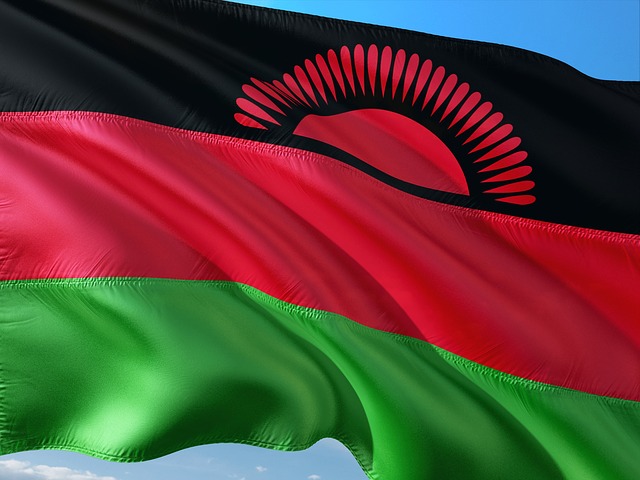By Tim Lambert
Ancient Malawi
Two thousand years ago there was a simple stone-age culture in Malawi. The people lived by hunting and gathering. However, by the 4th century AD, Bantu people arrived in the area and introduced iron tools and weapons. They also introduced farming.
In the 15th century, people who lived south of Lake Nyasa began to build an empire. They created an empire called the Maravi. By the 18th century, the Maravi Empire included parts of Zimbabwe and Mozambique. However, in the 18th century, the Maravi Empire broke up.
Meanwhile, in the 16th century, the Portuguese reached the Maravi Empire. The people of the empire sold them slaves and ivory. The Portuguese brought maize (originally a South American crop) to this part of Africa.
In the 18th century and early 19th century, a people from northern Mozambique called the Yao raided Malawi and took captives to be sold to the Arabs as slaves.
In the 1840s a fierce people called the Ngoni invaded the area. They frequently fought the Yao.
British Malawi
In 1859 David Livingstone the Scottish explorer and missionary reached Lake Nyasa. Following him in 1873 two Scottish Presbyterian missionary societies built missions in the area. More missionaries followed and British merchants began to sell goods in the region. In 1883 Britain sent a consul to the area.
Gradually the British took control of Malawi. In 1889 they formed the Shire Highlands Protectorate and in 1891 most of Malawi was formed into the British Central African Protectorate. The first commissioner was Harry Johnston. The British ended the slave trade and created coffee plantations. In 1897 Johnston was replaced by Alfred Sharpe.
In 1907 the British named Malawi Nyasaland. Also in 1907, Nyasaland was given a legislative council. The commissioner was made a governor. Alfred Sharpe retired in 1910.
When the First World War began Germans from Tanzania invaded Nyasaland (Malawi) but they were repelled. However, in January 1915 a man named John Chilembwe led a rebellion in Malawi which was quickly crushed.
During World War II almost 30,000 Malawians served in the armed forces.
However, as the Africans were increasingly well educated they became more and more dissatisfied with being ruled by Europeans. In 1944 they formed the Nyasaland African Congress. In 1949 native Malawians were allowed to sit on the legislative council for the first time.
Then in 1953, the British joined Northern Rhodesia (Zambia), Southern Rhodesia (Zimbabwe), and Nyasaland (Malawi) into a single unit called the Federation of Rhodesia and Nyasaland.
In 1958 Dr Hasting Banda became head of the African Congress, which was renamed the Malawi Congress Party in 1959. There were many protests against British rule and as a result, a state of emergency was declared. (During it Banda was imprisoned for a time).
However, the British now realized that independence for Malawi was inevitable. In 1961 the Malawian Congress Party won elections to the legislative council and in 1962 the British agreed to make Malawi independent. The Federation of Rhodesia and Nyasaland was dissolved in 1963. Malawi became independent on 6 July 1964.
Modern Malawi
At first, Banda was the prime minister of Malawi. In 1966 Malawi was made a republic. (The British Queen was no longer head of state) and Banda became president.
Under British rule, Zomba was the capital of Malawi. In 1975 Lilongwe became the capital.
For economic reasons, Banda was keen to have good relations with South Africa. In 1967 he established diplomatic relations. This move was unpopular because South Africa then had a system of apartheid. Nevertheless, Banda visited South Africa in 1971.
Furthermore, Banda’s rule became a dictatorship. In 1971 he made himself president of Malawi for life. All dissent was ruthlessly crushed. Letters and telephone calls were censored. So were films and magazines.
However, like other African dictators, Banda himself was very rich, while most of his people were very poor. Banda owned palaces, cars, and even helicopters.
Then in 1992, Malawi suffered a severe drought. Not surprisingly there were violent protests in Malawi. Also, some Western countries suspended aid. The Malawian churches also decried the situation.
Finally, in 1993 Banda was forced to hold a referendum. The people were asked if they wanted to continue one-party rule or return to democracy. The great majority voted for democracy. So elections were held on 17 May 1993. Bilki Muluzi became the new president.
21st Century Malawi
Today many people in Malawi are subsistence farmers. The main crops are cassava, sorghum, and maize. There are also many cattle and sheep. Malawi also has many white-owned plantations. Products include tea, tobacco, sugar, cotton, and peanuts.
Many Malawians also live by fishing on Lake Malawi. Furthermore, Malawi has great tourism potential. It has several national parks.
In 2004 Bingu wa Mutharika was elected President of Malawi and he began an anti-corruption drive. In 2012 Joyce Banda became the first woman president of Malawi.
Meanwhile, in the early 21st century, Malawi achieved steady economic growth. Although Malawi is still a poor country it is developing. There is reason to be optimistic about the future of Malawi. In 2023 the population of Malawi was 19 million.

Last Revised 2025